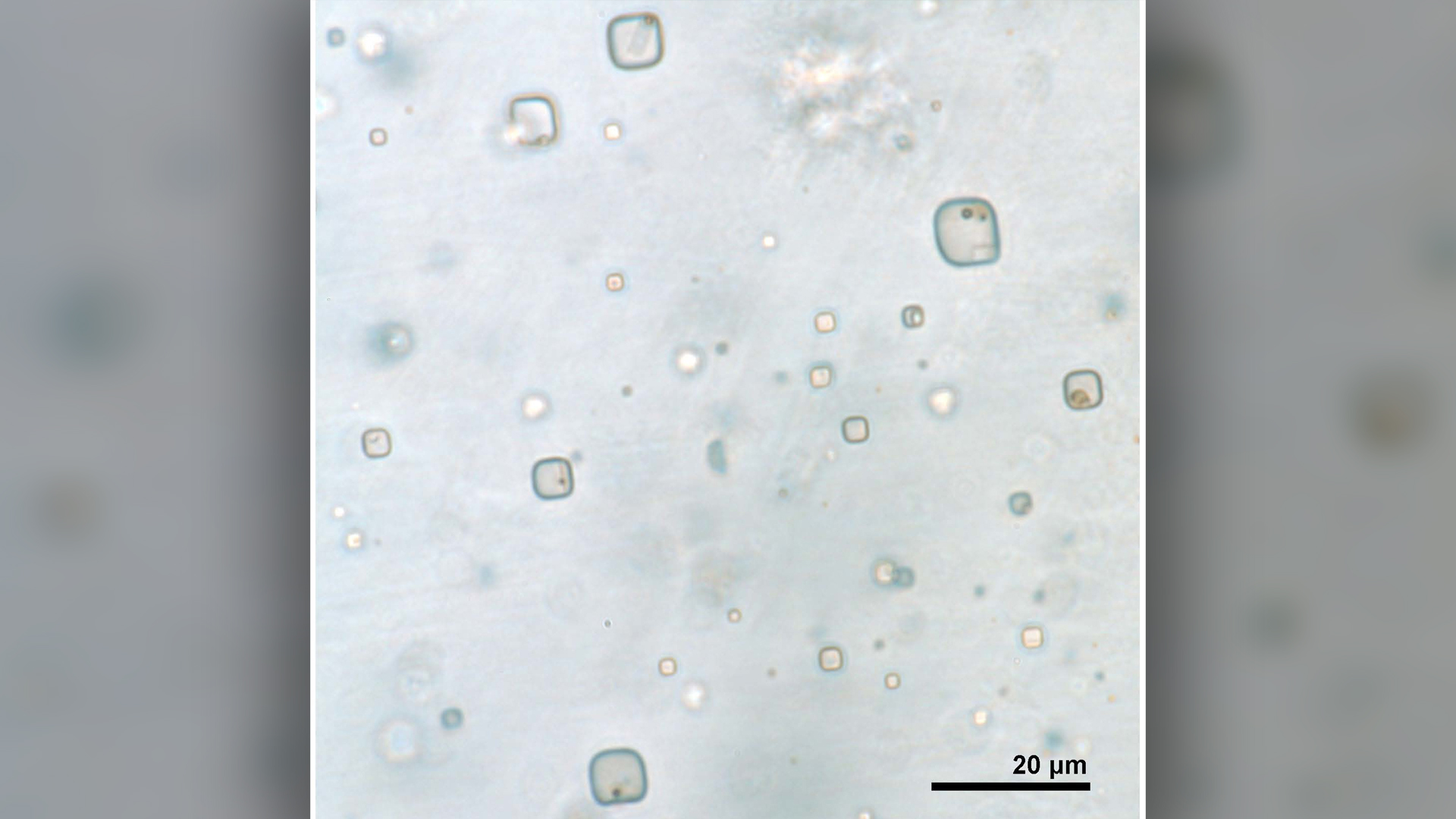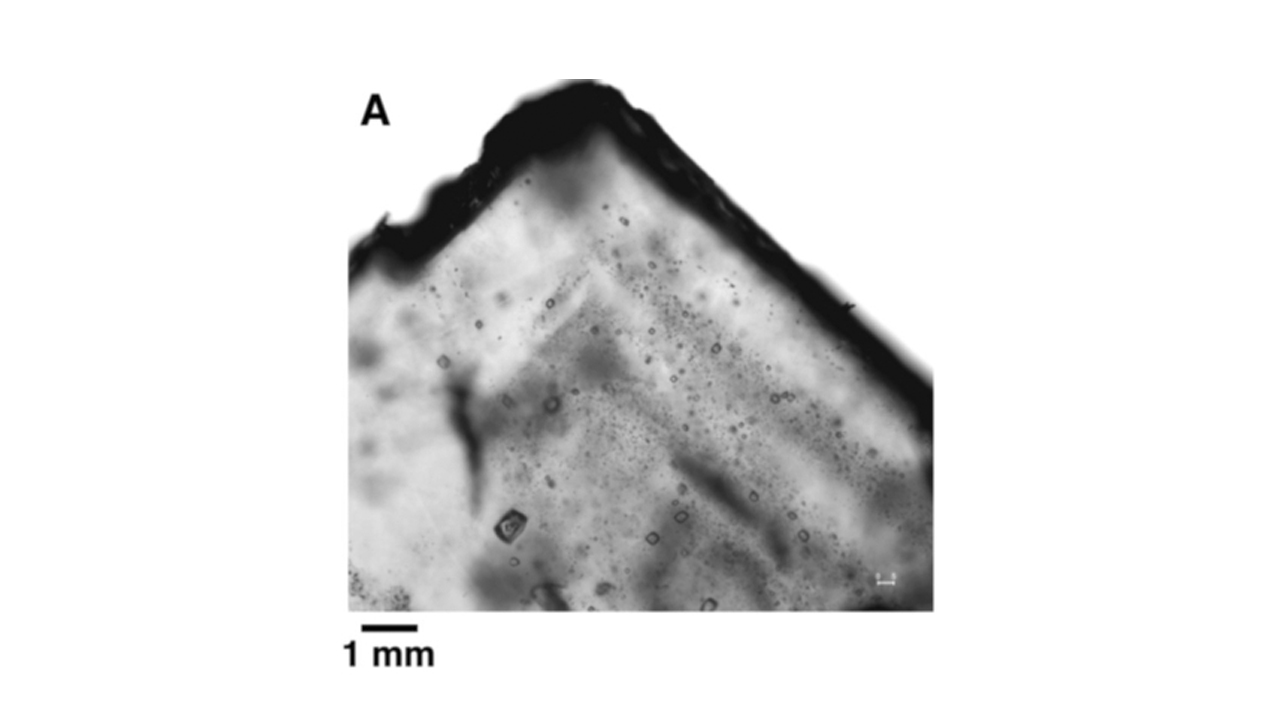830 million-year-old organisms found locked in ancient crystals could be resurrected
Ancient salt crystals trapped ancient life.

Salt crystals from Central Australia hold ancient microorganisms that became trapped 830 million years ago, new research finds.
And there's a chance that some of the microorganisms might still be alive.
The single-celled organisms are locked in tiny fluid pockets — smaller than the width of a human hair — in halite, or salt, from a formation of sedimentary rocks. The microorganisms lived nearly 1 billion years ago in what was either a shallow, salty marine environment or a shallow, salty lake. The researchers discovered this ancient life by peering into the salt crystals using light microscopy, meaning they didn’t disturb the fluid pockets — and the status of the life inside them is unknown. However, scientists have previously claimed they resurrected primeval microorganisms found in salt crystals, so it’s possible that the Australian organisms may also still be alive.
Locked in salt
Ancient microorganisms have been found in salt crystals before, with the oldest dating back to the Permian period about 250 million years ago. Most studies of these crystals are destructive, however, said study co-author Sara Schreder-Gomes, who conducted the research while at West Virginia University. In previous studies, researchers extracted the fluids locked inside the crystals with a syringe, or crushed or dissolved the crystals to get at the mysteries inside.
These methods can make it tricky to understand how old the microorganisms inside the fluid pockets are. For example, some fluid pockets form immediately as the salt crystal takes shape, meaning anything trapped inside is the same age as the crystal, Schreder-Gomes said. Other pockets form later, as fractures in the crystal fill in. Once the crystal is crushed, it's hard to ensure that primary and secondary fluid pockets don't get mixed.
Related: 24,000-year-old 'zombies' revived and cloned from Arctic permafrost
The new study examined halite from Australia's Browne formation, which preserves an ancient, salt-rich landscape. The researchers took samples of halite from 4,858 feet (1,481 meters) to 4,987 feet (1,520 m) below the modern-day surface and sliced the halite 0.04 inch (1 millimeter) thin. They then conducted a microscopic examination of the halite using both visible and ultraviolet light, magnifying the contents of the fluid pockets inside by up to 2,000 times and focusing on the primary crystals that formed 830 million years ago.
Sign up for the Live Science daily newsletter now
Get the world’s most fascinating discoveries delivered straight to your inbox.

Zombie life and the search for ancient aliens
Inside, the researchers discovered eukaryotes (algae and fungi with distinct cell nuclei) and prokaryotes (bacteria and archaea with no nuclei). They distinguished these organisms by shape, size, color and fluorescence under UV light, Schreder-Gomes said.
The researchers can't determine the precise species of these microorganisms, though one looks a lot like Dunaliella, a very common salt-loving algae found in both ancient and modern salty environments. The organisms are tiny, ranging from half a micron to 5 microns in diameter. (For comparison, a human hair is around 70 microns wide.)
Salt-loving microorganisms are survivors, capable of going dormant or otherwise altering their metabolisms to stay alive during times when the water around them dries up, Schreder-Gomes said. In 2000, scientists claimed to have revived a 250-million-year-old bacterium from salt, though they could not definitively prove that their zombie bacteria weren't modern contaminates. Other very old microorganisms have been revived with more certainty, including 101.5 million-year-old bacteria from seafloor sediments. The researchers have not, at this point, breached the crystals to find out if the Australian microorganisms might have a chance at a second life. "If they were able to survive 250 million years, why not a few hundred million years more?" Schreder-Gomes said. "It's certainly a possibility for the future to try to culture them."
The findings could be used to search for ancient aliens. The Browne formation rocks formed in a similar environment to the environment that likely existed on ancient Mars, Schreder-Gomes said. The methods the team used to study the organisms could also be used to search for long-gone microorganisms from the Red Planet. The Perseverance Mars rover is caching rocks that will eventually be brought to Earth, and non-destructive techniques will be necessary to understand the context of those rocks' formations, Schreder-Gomes said.
"We need to do these sorts of analyses before any other destructive techniques with any return samples," She said.
Originally published on Live Science

Stephanie Pappas is a contributing writer for Live Science, covering topics ranging from geoscience to archaeology to the human brain and behavior. She was previously a senior writer for Live Science but is now a freelancer based in Denver, Colorado, and regularly contributes to Scientific American and The Monitor, the monthly magazine of the American Psychological Association. Stephanie received a bachelor's degree in psychology from the University of South Carolina and a graduate certificate in science communication from the University of California, Santa Cruz.










